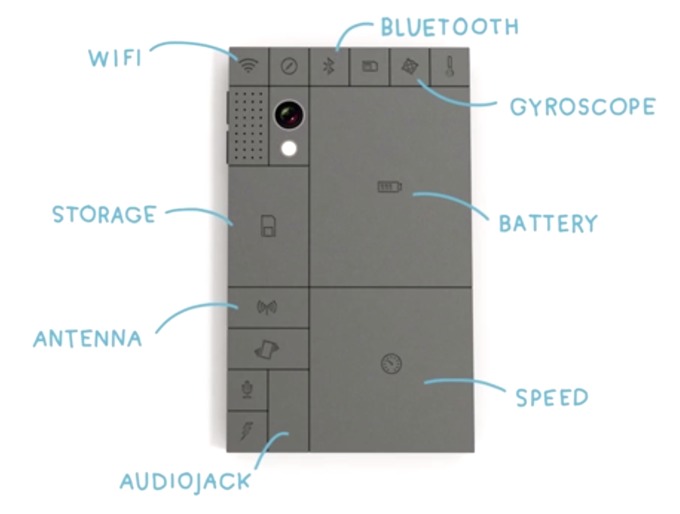Modular Smartphones in 2025: The Future of Customizable, Sustainable Tech
In 2025, the tech landscape is undergoing a major shift, and at the center of this disruption is the rise of modular smartphones. These revolutionary devices are redefining what it means to own and upgrade a mobile phone. Unlike traditional smartphones, which are sealed units with fixed components, modular phones offer users the ability to upgrade, repair, or personalize individual parts—such as the camera, battery, screen, or processor—without replacing the entire device.
This transformation is not just about convenience. It represents a serious push toward reducing electronic waste, empowering users, and extending device longevity. As environmental concerns and right-to-repair movements gain traction globally, modular smartphones are emerging as a viable and sustainable alternative to the disposable nature of mainstream mobile devices.
What Are Modular Smartphones?
At their core, modular smartphones are built from interchangeable components, or “modules”, that users can detach and replace as needed. Imagine your phone as a LEGO set—if you want a better camera, you simply snap out the old one and insert an upgraded module. Need longer battery life? Swap out the battery module for a larger one. Want improved performance? A faster processor module is just a click away.
This concept, while not entirely new, has finally gained momentum thanks to advancements in miniaturized hardware, standardized connectors, and growing demand for sustainable consumer technology. The modular approach gives users more control, reduces dependency on manufacturers for minor upgrades, and significantly cuts down on unnecessary waste.
Key Developments in 2025
This year has been a turning point for modular smartphones. Several developments have brought this once-niche idea into the mainstream spotlight:
🔧 Fairphone 5 and the Evolution of Ethical Tech
Fairphone, a Dutch company known for championing ethical sourcing and repairability, launched its most advanced model yet—the Fairphone 5. This device features easily replaceable parts like the display, USB-C port, battery, and even the motherboard. With modularity as its cornerstone, Fairphone continues to appeal to eco-conscious consumers who value longevity and transparency in manufacturing.
⚙️ Google’s Project Ara Returns
Once shelved, Google’s Project Ara has made a comeback in 2025, this time backed by hardware powerhouses like Qualcomm and Sony. The latest prototype introduces a sleek frame with magnetic module connectors, supporting components like 5G modems, biometric sensors, and advanced camera systems. With improved design and practical usability, Project Ara is once again turning heads and hinting at a modular future led by major tech players.
📱 Mainstream Adoption by Tech Giants
The success of modular phones hasn’t gone unnoticed by industry giants. Companies like Samsung, Xiaomi, and OnePlus are rumored to be developing their own modular concepts. Leaks suggest that Samsung’s “Galaxy Modular” may launch by late 2025, combining flagship performance with the modular flexibility users are craving. These moves signal that modular phones are no longer a niche experiment—they’re being taken seriously by the mainstream market.
Real-World Applications of Modular Smartphones

The benefits of modular smartphones go far beyond novelty. They’re enabling real-world improvements in the way we use, repair, and upgrade our devices:
🌍 Sustainability
The environmental benefits are substantial. By allowing users to replace only the faulty or outdated component rather than the entire phone, modular devices dramatically reduce e-waste. According to a 2025 sustainability report, global adoption of modular smartphones could cut electronic waste by up to 20% annually—a significant win in the fight against our growing tech trash crisis.
💰 Cost Savings
Modular phones offer long-term savings. Rather than purchasing a new $1,000 device every two years, users can buy a new camera module for $100 or a replacement battery for $50, extending the life of their existing phone. This model also makes it easier for tech enthusiasts and budget-conscious consumers alike to stay up-to-date without overspending.
🎮 Customization for Niche Needs
Gamers, content creators, and power users can tailor their phones to suit their exact requirements. Think attachable VR headsets, cooling modules, enhanced audio systems, or high-end camera attachments. The flexibility to adapt the phone’s hardware for specific tasks is a huge draw for those who demand more from their devices.
🛠️ Accessibility and Easy Repairs
In many parts of the world, access to reliable repair services is limited. Modular phones empower users to perform repairs themselves with simple tools and open-source repair guides. Fairphone, for instance, offers step-by-step tutorials on platforms like YouTube, making it easier for anyone—even with no technical background—to maintain their devices.
Challenges and Limitations
Despite their promise, modular smartphones still face several hurdles:
- Design & Durability: Creating modular phones that are sleek, lightweight, and as durable as non-modular counterparts is a major engineering challenge. Early designs were often bulky or fragile, which made them less appealing to everyday users.
- Standardization Issues: Without a universal standard for modules, there’s a risk of fragmentation—where users are locked into proprietary systems, similar to Apple’s ecosystem. Industry-wide collaboration is necessary to avoid this.
- Consumer Mindset: Many users are still accustomed to upgrading their entire phone every 1–2 years. Shifting this mindset toward modular, sustainable upgrades will require education, marketing, and time.
- Initial Costs: The upfront cost of modular phones can be higher due to the complex engineering and smaller production runs. However, as adoption increases, prices are expected to stabilize.
Looking Ahead: The Future of Modular Smartphones
Analysts forecast that by 2026, modular smartphones could command 15% of the global mobile market. This projection is bolstered by growing environmental awareness, evolving consumer habits, and government policies such as the EU’s 2025 mandate requiring consumer electronics to be more repairable and recyclable.
Hardware vendors are also preparing for a modular future. For example, Qualcomm’s Snapdragon 8 Gen 4 processors are being designed with modular compatibility in mind, ensuring top-tier performance remains accessible even within customizable devices.
For consumers, this means more freedom. Whether you’re a casual user who wants longer battery life or a creative professional needing the best camera setup, modular phones give you the tools to build the perfect device without unnecessary waste.
Conclusion
In 2025, modular smartphones have evolved from a futuristic dream to a practical, impactful reality. They offer an exciting blend of sustainability, affordability, and customization that challenges the throwaway culture dominating the tech industry.
While hurdles like design complexity and standardization remain, the momentum is unmistakable. Modular phones are not just a tech trend—they’re a movement, one that aligns with a more conscious, user-empowered digital future.
As one user on X put it: “Why buy a whole new phone when I can just upgrade the camera and keep everything else I love?” In a world where both consumers and the planet demand smarter choices, modular smartphones may be exactly what the future needs.











